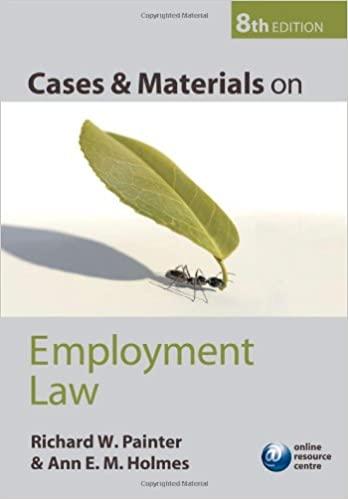(i) Show that variograms defined for real-valued stochastic processes or for random fields (Z(x), x in X)...
Question:
(i) Show that variograms defined for real-valued stochastic processes or for random fields \(Z(x), x \in X\) as twice \(\operatorname{Var}\left[Z\left(x_{1}ight)-Z\left(x_{2}ight)ight], x_{1} \in \mathcal{X}, x_{2} \in \mathcal{X}\), are conditionally negative definite.
Suppose the expected values \(E\left(Z\left(x_{1}ight)=E Z\left(x_{2}ight)=0ight.\) and thus \(\operatorname{Var}\left[Z\left(x_{1}ight)-Z\left(x_{2}ight)ight]=E\left[Z\left(x_{1}ight)-Z\left(x_{2}ight)ight]^{2}\) and then use the property of positive (semi)definiteness of the covariance function \(E\left[Z\left(x_{1}ight) Z\left(x_{2}ight)ight]\).
(ii) Show that if \(X\) is the real line or a Euclidean space, then \(\left|x_{1}-x_{2}ight|\) is conditionally negative definite and the corresponding metric space (the usual Euclidean space) has strict negative type.
Let \(Z(s)\) be the standard Wiener process and compute its variogram.
(iii) Prove that on the real line (or on Euclidean spaces) \(\left|x_{1}-x_{2}ight|^{\alpha}\) where \(0<\alpha<2\) is conditionally negative definite.
Fractal Brownian motions with Hurst index \(H\) are defined as a continuous-time Gaussian processes on the real line (or in more general
spaces) that start at zero, have expectation zero for all \(x \in \mathcal{X}\), and have the following covariance functions:
\[
E\left[B_{H}\left(x_{1}ight) B_{H}\left(x_{2}ight)ight]=\frac{1}{2}\left(\left|x_{1}ight|^{2 H}+\left|x_{2}ight|^{2 H}-\left|x_{1}-x_{2}ight|^{2 H}ight),
\]
where \(H\) is a real number in \((0,1)\), called the Hurst index or Hurst parameter. The Hurst exponent describes the raggedness of the resultant motion, with a higher value leading to a smoother motion. If \(H=1 / 2\), then the process is in fact a classical Brownian motion or Wiener process; if \(H>1 / 2\), then the increments of the process are positively correlated; if \(H<1 / 2\), then the increments of the process are negatively correlated. Fractal Brownian motions have abrupt and dramatic reversals called "Noah effect" and trends - cycles called "Joseph effect." Based on the covariance function of fractal Brownian motion, show that \(\left|x_{1}-x_{2}ight|^{2 H}\) is strictly negative definite.
(iv) Generalize (iii) for arbitrary Gaussian processes with general positive definite covariance function.
The strict negative definiteness of \(\left|x_{1}-x_{2}ight|^{\alpha}\) where \(\alpha=2 H\) is related to the property that the negative logarithm of the characteristic function of a symmetric stable distribution is \(|x|^{\alpha}\). As a generalization, show that if \(\phi(x)\) is a (real-valued) characteristic function of a symmetric infinitely divisible distribution, like the symmetric Laplace distribution, then \(-\log \phi(x)\) is conditionally negative definite. (A univariate real-valued function \(f(x)\) is called conditionally negative definite if \(f\left(x_{1}-x_{2}ight)\) is conditionally negative definite.)
Step by Step Answer:

Cases And Materials On Employment Law
ISBN: 9780199580712
8th Edition
Authors: Richard Painter, Ann Holmes





